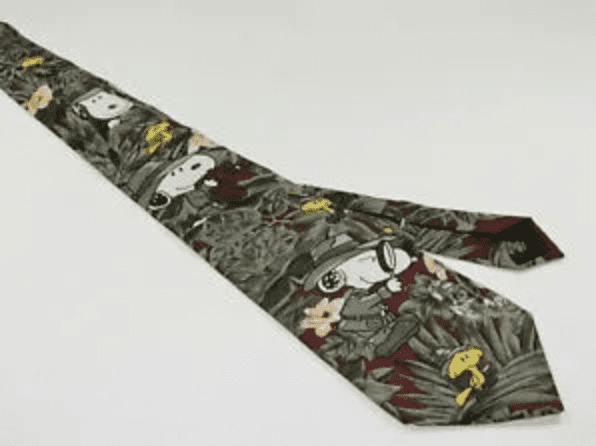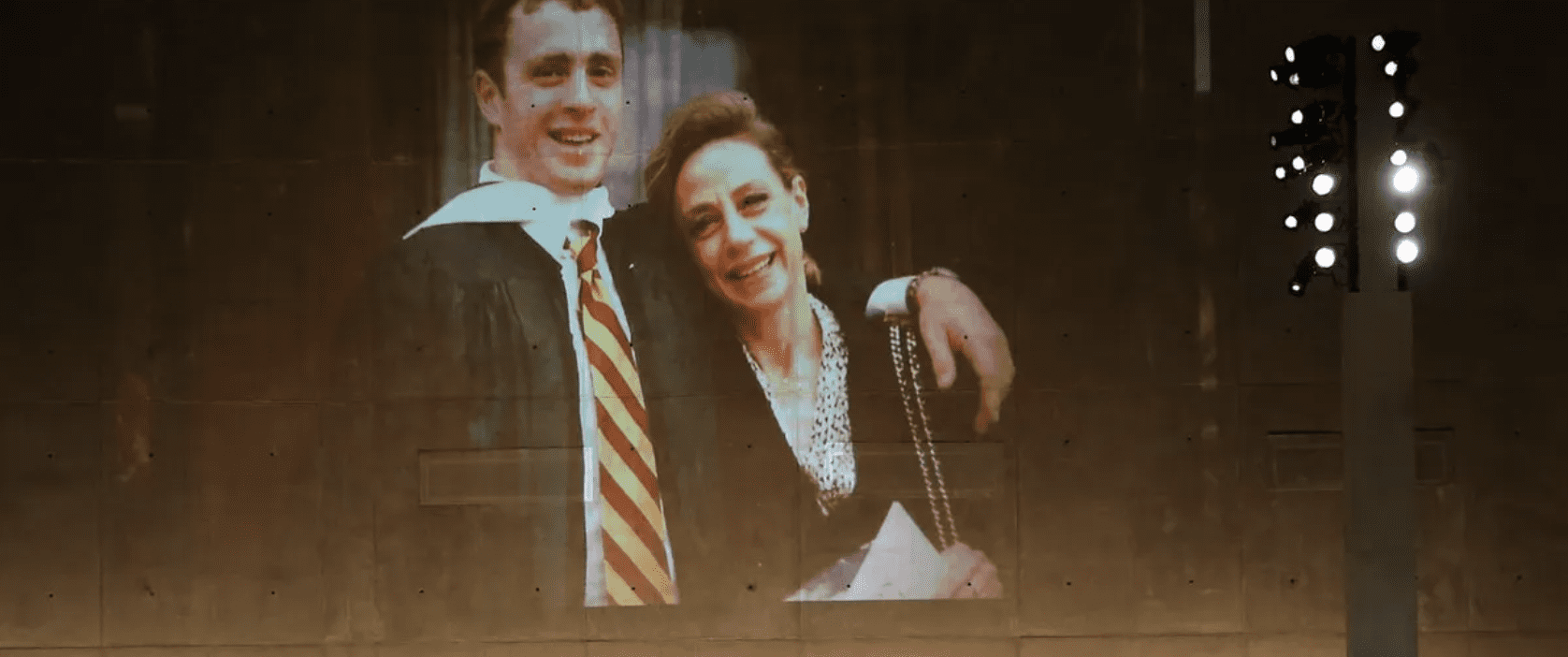 Technology
Technology  Technology
Technology  Humans
Humans 10 Everyday Human Behaviors That Are Actually Survival Instincts
 Animals
Animals 10 Animals That Humiliated and Harmed Historical Leaders
 History
History 10 Most Influential Protests in Modern History
 Creepy
Creepy 10 More Representations of Death from Myth, Legend, and Folktale
 Technology
Technology 10 Scientific Breakthroughs of 2025 That’ll Change Everything
 Our World
Our World 10 Ways Icelandic Culture Makes Other Countries Look Boring
 Misconceptions
Misconceptions 10 Common Misconceptions About the Victorian Era
 Mysteries
Mysteries 10 Strange Unexplained Mysteries of 2025
 Miscellaneous
Miscellaneous 10 of History’s Most Bell-Ringing Finishing Moves
 Technology
Technology Top 10 Everyday Tech Buzzwords That Hide a Darker Past
 Humans
Humans 10 Everyday Human Behaviors That Are Actually Survival Instincts
 Animals
Animals 10 Animals That Humiliated and Harmed Historical Leaders
Who's Behind Listverse?

Jamie Frater
Head Editor
Jamie founded Listverse due to an insatiable desire to share fascinating, obscure, and bizarre facts. He has been a guest speaker on numerous national radio and television stations and is a five time published author.
More About Us History
History 10 Most Influential Protests in Modern History
 Creepy
Creepy 10 More Representations of Death from Myth, Legend, and Folktale
 Technology
Technology 10 Scientific Breakthroughs of 2025 That’ll Change Everything
 Our World
Our World 10 Ways Icelandic Culture Makes Other Countries Look Boring
 Misconceptions
Misconceptions 10 Common Misconceptions About the Victorian Era
 Mysteries
Mysteries 10 Strange Unexplained Mysteries of 2025
 Miscellaneous
Miscellaneous 10 of History’s Most Bell-Ringing Finishing Moves
Top 10 Luckiest 9/11 Survivors
As we approach the 20th anniversary of the most devastating terrorist attack on American soil, we’re reminded of the day’s cascading tragedies. Four hijacked planes. Two imploded skyscrapers. The seat of the most powerful military on Earth bursting into flames.
Nearly 3,000 people died that day in plane crashes, building collapses and desperate leaps from burning buildings. Still, such disasters often have a select few who stand out as unlikely survivors. Here are ten.
RELATED: 10 Disturbing Raw Videos From 9/11
10 First One Down, Last One Out: Ron DiFrancesco (South Tower, 84th Floor)
Of the two collapses, the South Tower’s was more stunning simply because it occurred first. Never had a building that gigantic completely come down, so most thought they had far longer to escape than the scant 56 minutes between impact and implosion.
So as he approached the South Tower’s ground level, Ron DiFrancesco figured the worst was over. Less than an hour before, the Euro Brokers executive was in his 84th Floor office when United Airlines Flight 175 slashed threw at an intentional tilt to cause maximum damage. The plane’s cabin and fuselage struck below him; the right wing sliced through the floors directly above.
DiFrancesco was trapped; he couldn’t ascend or descend without flames and smoke. Finally, using sheered off sheetrock as a shield, he plowed his way through intense heat downward until he heard a voice. It was a firefighter, who guided DiFrancesco below the impact zone.
By the time he reached street level, a rescue worker was ordering everyone to exit via the basement; the plaza had too much debris (including, horribly, jumpers). DiFrancesco was nearly done descending at 9:59am. The building was collapsing.
DiFrancesco turned, saw a huge fireball… and blacked out. He woke up in a hospital, with burns over most of his body and his contact lenses melted in his eyes. He is the last known person to leave the South Tower.
9 Tied Up: Joseph Lott (Marriott Hotel)

On the morning of September 11, Joseph Lott woke up at the Marriott Hotel sandwiched between the two World Trade Center towers. A sales representative with Compaq Computers, he was participating in a presentation that day at Windows on the World, the renowned restaurant and conference venue occupying the North Tower’s uppermost floors.
Little did he know that his quirkiest hobby would soon save his life. Lott has an affinity for “art ties,” neckties featuring famous masterpieces. And when he arrived at the hotel lobby for a pre-presentation breakfast with colleagues, one of them, Elaine Greenberg, had a gift for him: a Monet tie. Lott loved it, and said he’d wear it when he spoke at the conference that morning.
Greenberg’s fashion consciousness spared Lott’s life: “Well, not with that shirt. You’re not going to put on a red and blue tie with a green shirt.”
After breakfast, Greenberg went up to Windows on the World while Lott went up to change his shirt. He was leaving his hotel room when the first plane struck. Lucky tie in tow, Lott was among the first to evacuate to safety. Everyone at Windows on the World—including Elaine Greenberg – died that day.
8 Saved by a Squeegee: Jan Demczur & Five Others (Elevator Shaft, North Tower)
Combined, the Twin Towers had 198 elevators, a system where express lifts took passengers to “Sky Lobbies” for transfer to local floor service. On 9/11, an estimated 200 people died in or near elevators. Some plunged to their deaths after the planes severed elevator cables; others incinerated as flames shot down shafts. Still others perished in stalled lifts when the buildings collapsed.
At 8:45am, window washer Jan Demczur was transferring at the North Tower’s 44th Floor Sky Lobby for an elevator to floors 67-74. He boarded a lift with five others: Shivam Iyer, John Paczkowski, George Phoenix, Colin Richardson and another man whose identity remains unclear.
Seconds after their ascension began, American Airlines Flight 11 struck the building. The elevator shook violently, then stopped. Soon, an intercom announced an explosion, and they figured they’d better find their own way out. They poked at the ceiling hatch and pried open the doors.
They were between express landings – no exit, just a wall, marked “50.” Demczur rapped on it. Sheetrock. Thank God for flimsy construction materials. Were it concrete, they were goners.
They had just one tool: Demczur’s squeegee handle. They shaved away one, two, three inches… then hit tiles. Smashing through them, they crawled out… into a bathroom.
The men made a beeline for the stairwell, reaching street level at 10:23am – five minutes before collapse. The life-saving squeegee is displayed at the National Museum of American History.
7 Words Can’t Describe: Sheila Moody (Pentagon, E Ring)
Though significantly shorter than the Twin Towers, the U.S Pentagon is actually the world’s largest office building. Key to this distinction is its thickness: the building comprises five concentric rings – a girth-over-height emphasis that, considering the WTC’s complete collapse, certainly saved lives that day.
Something else saved lives, too: American Airlines Flight 77 impacted the Pentagon’s west side, which was undergoing construction and was emptier than usual. Still, 184 Pentagon personnel died. Their fates were, unsurprisingly, highly dependent on what ring they occupied. Many staff in the outermost circle, E Ring, simply didn’t have a chance; for example, of the 40 workers at the Program, Budget and Managerial Accounting divisions, just six survived. Of these, Sheila Moody was likely the luckiest.
At 9:37am, Moody heard a “whistling sound…. then a rumble, and a large gush of air and a fireball came into the office and just blew everything… and knocked us over.” Though the path to safety – the gaping hole created by the plane – was just yards away, Moody couldn’t see it through the thick smoke. She tried to call out for help – then realized she couldn’t breathe, let alone yell. Overcome, she began to black out.
“So,” Moody recalls, “I started clapping my hands.”
Her rescuer, Staff Sergeant Chris Brahman, extinguished the flames between them and carried her out. Moody was hospitalized for burns throughout her body – including her life-saving hands.
6 Grounded: Steve Scheibner (Pilot, American Airlines)
By September 2001, Steve Scheibner had a solid decade of service with American Airlines; before that, he was a Navy pilot. If you were boarding a cross-country flight, he was the kind of guy you’d want flying it.
And fortunately for him, he still is.
On September 10, 2001, Scheibner logged into American Airlines’ pilot registration system. It was common for assignments to be filled as late as the day before a flight. Scheibner noticed just one available assignment for the following day: an early-morning leg from Boston to Los Angeles. He snagged the open slot and, that afternoon, told his wife he’d be flying to L.A. the next day.
In American Airlines’ system, once an assignment slot was claimed a pilot with seniority has half an hour to override it. It was called “bumping” and, considering the tight time constraint, didn’t happen too often. But much to Scheibner’s chagrin, this time it did: a colleague with slightly more tenure, Tom McGuinness, supplanted Scheibner’s spot.
The next morning, McGuinness and co-pilot John Ogonowski became the first two victims of 9/11 when, at about 8:18am, hijackers led by Mohamed Atta stormed the plane’s cockpit and either killed or incapacitated them. About 28 minutes later, American Airlines Flight 11 slammed into the North Tower of the World Trade Center. Scheibner’s experience is recounted in a 2011 short film called “In My Seat.”
5 Keystroke of Luck: Elise O’Kane (Flight Attendant, United Airlines)
Like American Airlines, United Airlines also had a computer-based assignment request system. Schedules were typically set a month beforehand, so in August flight attendant Elise O’Kane logged in to register for her usual trip from Boston to Los Angeles. Unfortunately (at the time, anyway), she mistakenly inverted two code numbers and ended up with an unintended schedule.
No biggie, though. In the ensuing weeks, O’Kane was able to trade flights with other flight attendants for all her typical assignments except for one: Flight 175 on September 11.
So on September 10, O’Kane logged in and requested that flight. But as luck would have it the system froze. By the time it finally processed her request, it was one minute past the airline’s deadline for such changes. Her request for Flight 175 was denied. She’d have to settle for Denver rather than LA.
The next morning, O’Kane’s Denver-bound plane left Boston’s Logan Airport between American Airlines Flight 11, which crashed into the World Trade Center’s North Tower, and United’s Flight 175, which struck the South Tower. O’Kane promptly switched jobs, eventually becoming a nurse.
4 Saved by “Bandana Man”: Ling Young (South Tower, 78th Floor Sky Lobby)

As many as 200 people were crowded into the South Tower’s 78th Floor Sky Lobby – a transfer point between express and local elevators – when, at 9:03am, United Airlines Flight 175 sliced directly through it. Only a handful survived. Ling Young was one of them.
“I flew from one side of the floor to the other side,” Young recalls. “When I got up I had to push things off me. I can’t see because my glasses were filled with blood… I looked around and saw everybody lying there, not moving. It was like a flat land. Everybody was lying down.”
Next to Young was a man whose facial features had been shorn off his skull. Young herself had severe burns whose pain was muted only by shock. Then, she heard a young man’s voice.
“I found the stairs,” he said. “Follow me.”
Young recalls two details about the young man. First, he was carrying another woman over his shoulder. Second, he was wearing a red bandana. Young struggled to her feet and followed him down. At the 61st floor, the man put down his human cargo, told them both to continue down, then ascended back upstairs. He was never seen again.
For months, the hero who became known as the Man in the Red Bandana went unidentified, before he was discovered to be 24-year-old Welles Crowther, an equities trader at Sandler O’Neill and Partners.
3 Finally Freed: Genelle Guzman (North Tower, 64th Floor)
An administrative assistant with the Port Authority, Genelle Guzman was in her 64th Floor office when she felt a huge crash overhead. She looked out the window and saw a giant fireball.
That day, those inside the towers generally had less info than those outside; Guzman and her colleagues didn’t realize the cause and extent of the explosion until they turned on the television. One look sent most fleeing for the exits. But Guzman and about 15 other coworkers stayed…
… because the intercom told them to. The PA system asked everyone to remain in place and await further instruction. There they stood until, at 9:03am, United Flight 175 slammed into the opposite building. Time to go.
Progress was painstaking. Packed stairwells were clogged further first by ascending firemen, then, at 9:59am, by the collapse of the South Tower, which sent plumes of debris and smoke pouring into its still-standing sibling.
They reached Floor 13 when, at 10:28am, the North Tower came down. Everyone died.
Except Genelle Guzman. Her head was pinned between two concrete pillars and her leg was so badly mangled it would nearly be amputated, but she was alive. And she stayed alive – in a smoldering maze of twisted steel – for an amazing 27 hours before firefighter Paul Somin and his rescue dog found her. In the early afternoon of September 12, Guzman became the last of the few survivors found in what became known to rescuers as “the pile.”
2 The Plane Dodger: Stanley Praimnath (South Tower, 81st Floor)
In the North Tower, no one at or above the impact zone of American Airlines Flight 11 survived. The plane irrevocably blocked all elevators and staircases, sealing the fates of some 1,400 people on floors 93 and above.
In the South Tower, only 18 people survived at or above where United Airlines Flight 175 slammed through floors 78-84. Among the most fortunate was Stanley Praimnath, an employee at Fuji Bank on the 81st Floor.
For starters, Praimnath’s salvation should have been far less miraculous. After the first plane hit the opposite building, he had descended to the South Tower lobby where – in a scenario that unfortunately cost many others their lives, including Praimnath’s boss, Kenichiro Tanaka – a security guard assured him the building was secure. So Praimnath returned to his office. A few moments later, he was on the phone when he glanced at a familiar object on the horizon: the Statue of Liberty.
“And that,” he said, “was when the plane caught my eye.”
Seconds later, Praimnath dove under his desk as the jet smashed through walls, brought down the ceiling and annihilated every desk – except his. So close was his call that a piece of the plane’s wing was wedged in his office door.
Praimnath came to buried in rubble. Eventually a stranger, Brian Clark, heard Praimnath’s desperate cries and freed him from the debris – an ordeal that involved hurling himself over a smoldering office partition.
1 Saving Her Saved Them: Josephine Harris (North Tower, 73rd Floor)
Josephine Harris tops the list because an entire group of firefighters see her as their guardian angel.
A Port Authority bookkeeper, Harris began evacuating her 73rd Floor office after the first plane struck 20 stories above. However, Harris had an injured leg from a car accident, making progress slow and painful.
Meanwhile, Ladder Company Captain Jay Jonas had led his crew up 27 floors of the North Tower when he felt an earth-shattering rumble. An FDNY radio report confirmed his fears: the South Tower had collapsed; time to go. The team ran down seven flights of stairs…
… right into Josephine Harris. They couldn’t leave her. The descent slowed to one arduous step at a time.
By the 4th Floor, Harris was in such pain she told the firefighters to leave and save themselves. They refused and, while waiting for her to regain some strength, the rumbling returned – only this time from directly overhead. They ducked, covered and prayed as the booms of pancaking floors drew ever nearer. And then it stopped.
It was part miracle, part mathematics. The rubble from a 110-story building exceeded four stories, and the staircase’s central location left pockets of life for evacuees – including precisely where the group was.
“It was a freak of timing,” said Jonas. “We know the people below us didn’t fare well. Above, to my knowledge, none got out. God gave us the strength and courage to save her, and unknowingly, we were saving ourselves.”








